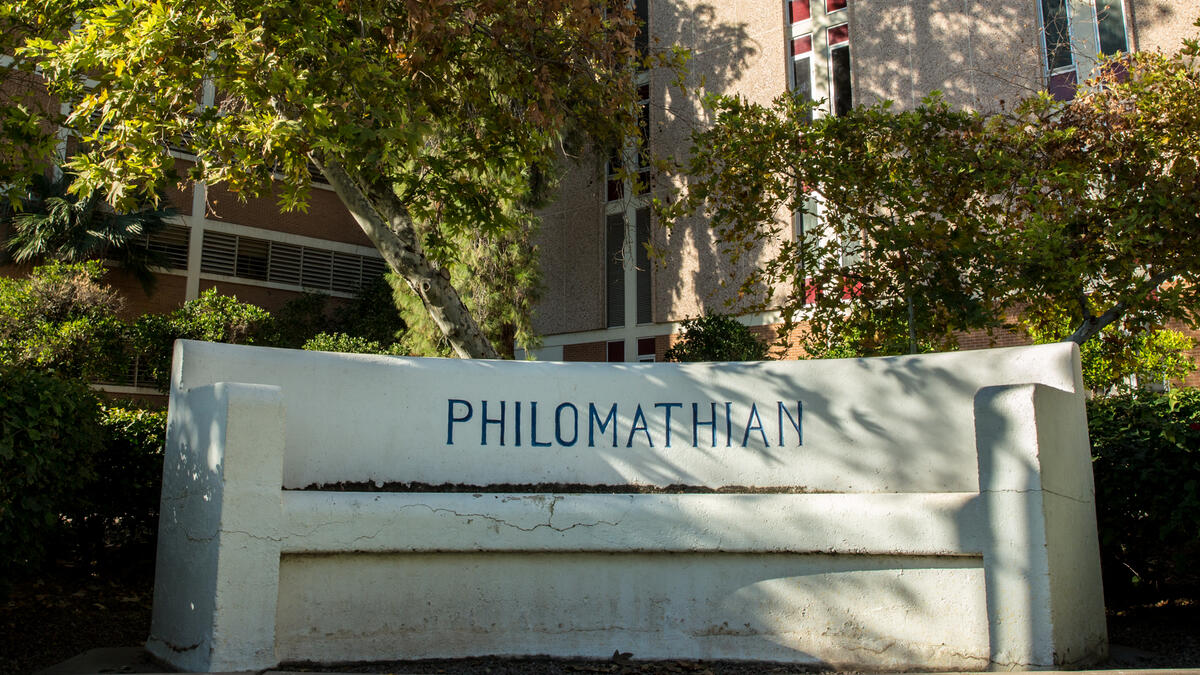You have probably passed by the Philomathian seat more than once while walking in front of Old Main on the Arizona State University Tempe campus. It's more than just a bench: It's a symbol of the beginnings of fraternities and sororities in the history of our university.
The Philomathians (derived from the Greek philomath, which means "a lover of learning”) were one of three literary societies organized by ASU President Arthur John Matthews in 1900. All students were required to participate in one of the societies: the Alphas — for freshman students only — the Olympians or the Philomathians. During this period, the three societies competed for an annual trophy. By 1912, all three were disbanded and were eventually replaced with voluntary clubs.
Video by Ken Fagan/ASU Now
The Philomathian society returned in 1921 as an all-women’s club that returned to its roots as “Lovers of Learning.” They continued to promote writing, music, oration, essay and debate for the betterment of their club members and enjoyed going on weekend camping trips and desert picnics together.
Just before the convocation of 1929, the Philomathian seat was dedicated by alumni. It has been a presence on the Old Main lawn ever since.
As time passed, the society became a sorority, adopted Greek letters and broadened activities to include dramatics, literature and social functions such as sports and music. In 1949, the Philomathian sorority was last listed in the Arizona State College annual, disbanding shortly thereafter. Since the 1950s, the Alpha Delta Pi sorority, which has loose ties to the Philomathians, has maintained the seat.
“Lovers of Learning” on the ASU campus should visit the seat every once in a while, have a sit, rest, remember the learners of the past, reflect on the present and continue ASU’s time-honored commitment to advancing education for everyone.
Top photo: The Philomathian seat sits just inside the lawn in front of Old Main on the ASU Tempe campus. It is located to the east of the Language and Literature building.
More Arts, humanities and education

ASU graduate education programs are again ranked among best
Arizona State University’s Mary Lou Fulton College for Teaching and Learning Innovation continues to be one of the best graduate colleges of education in the United States, according to the…
ASU FIDM students to see their designs on the runway at Uncertainty Fashion Showcase
Nola Hill is perfecting every stitch of her fashion design collection, which she started conceptualizing last summer.She is among 30 ASU FIDM fashion design students who have been working late into…

ASU+GSV Summit brings experts together to discuss innovation in education
This week, Arizona State University President Michael Crow and other university leadership joined education and learning experts from around the globe at the ASU+GSV education technology summit in…


